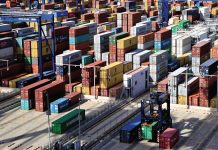ISLAMABAD: Special Economic Zones (SEZs) under the China-Pakistan Economic Corridor (CPEC) will be a lifetime opportunity for Pakistani companies to work together with Chinese partners for the development of export-oriented manufacturing industries.
The SEZs with new business models would help generate decent jobs, develop industrial and business infrastructure, and establish domestic value chains and their connectivity with global supply and value chains. Therefore, the SEZs are expected to provide the much-needed impetus to stimulate economic activities in Pakistan.
Virtually, every district headquarters of Pakistan has an industrial estate or area with infrastructures, and offers various incentives: Punjab province has 26 industrial estates, whilst Sindh, Balochistan, and KP provinces have 30, seven, and 12 industrial estates, respectively. Some of these are successful, whilst others are not so successful because they are established in remote areas lacking the necessary skilled workforce or basic amenities for workers.
Some big cities also have industrial clusters on the basis of their strength in a skilled workforce, raw material, supporting institutions, and deep historical links with local and global supply chains. These clusters include sports and surgical clusters in the city of Sialkot, textiles clusters in Faisalabad, fan clusters in Gujrat, and engineering clusters in Gujranwala to name the major ones.
In an interview with WealthPK, Dr Zafar Mahmood, Professor of Economics at the National University of Sciences and Technology (NUST), said there are several small industries working individually in Sialkot, Gujranwala, and Gujrat that import goods such as surgical, electronic and iron goods in raw form. These small companies convert these imported goods into finished products and export them to Italy.
“There is a need to bring these small industries into the ambit of SEZs so that the industrial clusters become part of this mega project under the CPEC and boost the industrial growth of Pakistan,” he said.
“These industrial clusters have the potential to add $1 billion annually to the gross national product (GNP) through foreign trade,” he added.
Dr Zafar mentioned that Pakistan has the fifth largest population in the world, and offers a cheap labour force to these industrial clusters, and thus will help the country increase export-led earnings.
To attain this potential revenue of $1 billion, it is essential that the government must form strategies prudently. Policies must be developed in close coordination with Chinese and Pakistani firms. Learning from Chinese experience for effective policy implementation is equally important. To overcome governance problems, decision-making must be decentralised as much as possible with the involvement of the private sector.
Since all the companies to be based in SEZs will be private, a market-based approach must be adopted. In consultation with potential industrial leaders from China and Pakistan, an agreed-upon set of rules of engagement must be developed with respect to how the SEZs should operate to ensure greater success. The SEZ planners should then organize roadshows to mobilize potential investors from China and Pakistan to promote SEZs.






